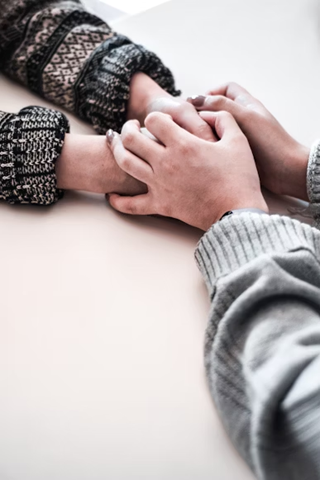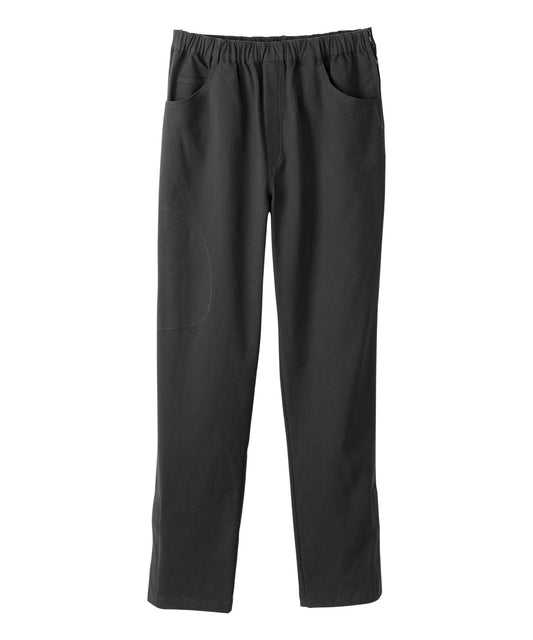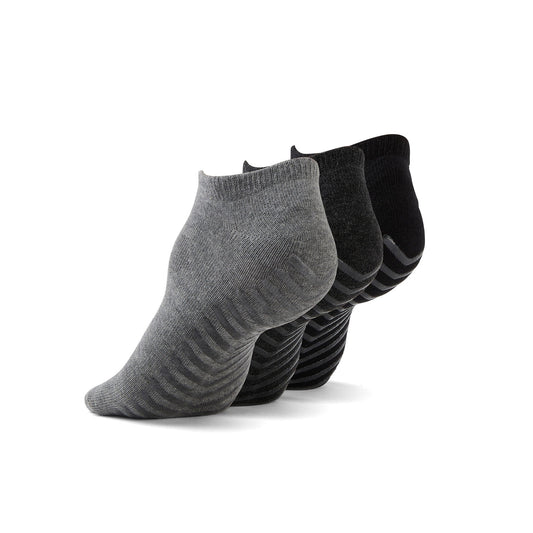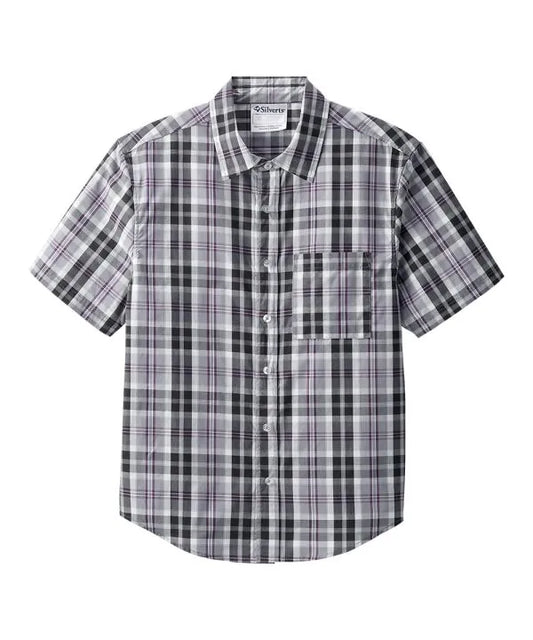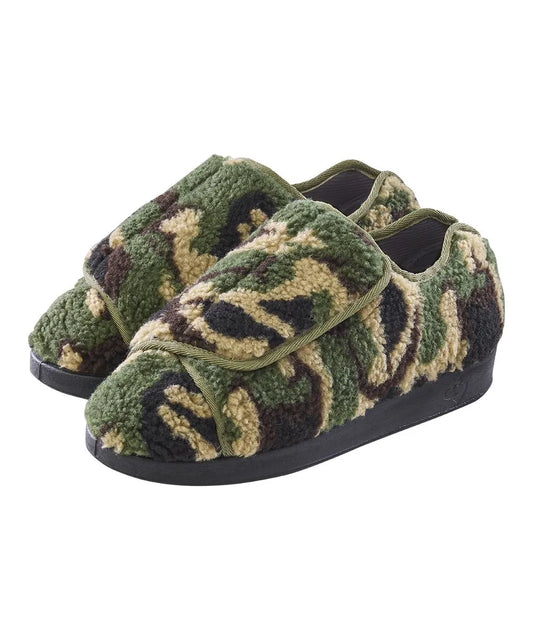By Maddie Feldhake in collaboration with Viterbo University
Having depression means that things that should seem easy: getting dressed, wearing clean clothing, washing your face –aren't. Who wants to be the person who goes a week, maybe longer, without showering? Or who lives in your PJs or sleeps in work clothing? Not to mention the hygiene/fashion fist fight-- greasy hair, bad breath, food soiled clothing, perpetual sweat... When you’ve lost the fight against the chore of clothing, forget about fashion.
The benefits of fashion go beyond getting dressed; fashion is a way for people to express their creativity, a motivation for self-care, and a physical reminder to yourself that you matter. While there is no quick cure to depression (to state the obvious), your closet potentially contains a few psychological tricks that you may find helpful.
How does depression affect getting dressed?
Completing daily tasks, including brushing teeth, completing laundry and showering, is difficult with depression. This can really change one’s relationship with clothing.
With depression, getting dressed turns from a mindless task to a battle. For one, depression often impacts your relationship to sleep. Research has found that around 75% of people with depression also struggle with insomnia. So right out of bed, you start your day off exhausted. Depression saps energy, making chores like getting up or putting on clean underwear exhaustion-inducing.
However, getting dressed is one way to set yourself up for success. This achievement may seem small, but this can provide motivation for leaving your house, exercising, and completing other jobs that may be hard to manage. "Enclothed cognition" research has found connections between people’s performances, their brain activity and their clothing choices. One study compared the test scores of people in regular clothing to those wearing white lab coats. Those in the coats performed better on “attention-related tasks.” The researchers found people had symbolically linked these white lab coats to the qualities of “attentiveness and carefulness.” Researchers posit this symbolic value meshed with the tactile experience of wearing the coats and resulted in better outcomes. Your clothes and what they symbolize can improve your cognition, mindset, and shape how you identify yourself. This shows you can use clothing as a potential tool to feel better and prime your brain to be more productive.
Wearing clean clothes (or just underwear) also helps prove to yourself that you deserve and can achieve the comfort that comes from cozy clothing, even if they do not match. This form of self-care also can give you a confidence boost while you are out and about in the world.
One way to reduce the difficulty of getting dressed is to set up a daily routine. A routine can help you divide the list of goals you need to complete each day into more manageable chunks. This lessens decision fatigue when everything seems equally important and undoable. The goal of a routine is not perfection, but it is rather a method of helping you accomplish your daily duties, including those that feel achievable. It is likely that you will not finish all of what you have planned each day (does anyone?), so allow yourself ample grace and compassion. Focus on and acknowledge the significance of your accomplishments, however easy they may seem. When getting dressed is challenging, setting up a routine can provide small successes to build upon and over time may decrease this duty’s difficulties.
Getting dressed feels harder with depression but is still possible –even if not today, tomorrow is another chance. Usually necessary to participate in the wider society, our clothing choices can cue our brains to be in a better state.
Does fashion affect mental health?
Fashion provides people with a medium to express ourselves, including how we feel and want to feel about ourselves. Fashion can help you feel like yourself again or inject confidence or reflect what improvements you want to embody. Fashion does not have to mean forcing yourself into clothing that makes you feel uncomfortable (emotional or material wise). Dressing in comfortable clothing that fits well and complements your body can improve how you feel about yourself (even if just subconsciously) and boost your mood. Wearing comfortable clothing is a simple yet luxurious sensory experience you can treat yourself to.
Want high quality, wonderfully relaxing clothing? Find it in the “Good Vibes – Gender Neutral Sweatpants” June Adaptive has customized for people struggling with and seeking to better their mental health. This everyday indulgences outside fabric section is 100% cotton and cozy. Its inner layers will sooth your skin despite your choice: a 65% cotton and 35% polyester blend or a Charcoal Heather mix with 55% cotton and 45% polyester. Whatever your comfort choice, these long-lasting snug pants with practical pockets (a rarity for clothing for women’s clothing) calming colors to choose from are midnight serenity black, soothing shadow charcoal and mindful mist grey.


“Good Vibes – Gender Neutral Sweatpants”
In addition to wearing very soft clothing to provide cozy comforts on stressful and overwhelming days, you should also take into account “how you get your hug.” Some people find dressing in loose yet fitting clothing, as a breathable but comfortable hug. Other people find their “hug” sensation within tighter clothing. For some people tight clothing causes anxiety and makes it difficult to move, for other people this wrap around sensation provides comfort -- whatever works for you.
June Adaptive’s “Choose Balance –Gender Neural Sweatshirt” solely consists of sensuously soft cotton, ideal for all people, especially those with sensitive skin. While not especially tight nor loose, its measurements, hugging hems and ribbed cuff enhances both a flattering style alongside a snug feeling. This complimentary cut combines comfort with confidence.

Fashion may motivate you to improve your hygiene. Baseline fashion promotes personal hygiene through completing daily living chores like showering and wearing clean clothing to look your best. Additionally, through daily face-washing (if possible), you can also prevent clogged pores, reduce acne and remove oils. (This is especially true if you use makeup.)
Do depressed people dress differently?
People who are depressed lose interest in a lot of things they have previously enjoyed, and this can include fashion and wanting to present oneself in the best light possible. Clothing is hastily worn, chosen for convenience, perhaps ill-fitting and crumpled.
Professor Karen Pine conducted a study that found that women tended to wear their favorite clothing when happy. This clothing was "well-cut, figure-enhancing, and made from bright and beautiful fabrics," whereas the clothing they tended to wear when depressed included baggy tops and jeans. This correlation between what we wear and how we feel indicates that clothing may have been able to psychologically influence and improve our moods.
Wearing dark clothing is like having dark countertops –it's easier to conceal that you have not washed them and cleaned up the crumbs, so to speak.
Do depressed people see color differently?
There are possible (limited) studies that suggest your mood may affect how you perceive color.
Hope Gillete of Psycentral cites that a 2010 study that assessed “40 people with a diagnosis of major depression” and determined they had “significant decreases in retinal sensitivity, even if they were taking medications to treat their symptoms.” The retinal is the part of our eyes that detects light and “receives and organizes visual information.” This measures how people perceive light within a range of intensities. As such, it is possible that major depression can influence the perception of a color’s vibrancy, which may lead to colors looking less bright.
June Adaptive’s snuggly hoodies include the “Restore Yourself – Gender Neutral Zip Up Hoodie” available in Restful Night Black and Inner Peace Navy. This 80% cotton, 20% polyester fleece mix turns this hoodie into a satisfying indulgence to accompany you wherever you go. With durable fabric and a range of color options, this is an investment you will continue to enjoy for the years to come.

Clothing Conclusions
From the small yet significant step of getting dressed to improving our mood and mind, our clothing choices are connected to our mental health. Fashion and comfortable clothing can be a small tool in your coping kit for living with and overcoming depression.
Kindly subscribe to June Adaptive’s newsletter at the bottom of this page for more content like this.
Further Resources
If you or someone you know is experiencing a mental health crisis, please use the numbers down below:
International:
International Association for Suicide Prevention
- Connects you free and confidential hotlines within your country
- Hotlines supporting everyone and marginalized groups
Canada:
9-8-8 Suicide Crisis Helpline
- Call 988 for 24/7 Help available in French and English
1-885-242-3310 Hope for Wellness Hotline
- Call or Chat online
- For Indigenous people across Candida
- 24/7 Support available in English and French and by request in Cree, Ojibway, and Inuktitut
United States:
988 Suicide and Crisis Lifeline (24/7 available through calling, texting and chatting)
- Call or Text 988
- English
- Spanish: Call 988, then press 2 to connect to a trained Spanish-speaking crisis counselor. Text “Ayuda” to connect with a Spanish-speaking crisis counselor
- For over 240 other languages https://988lifeline.org/faq/
Individuals with Neurodivergence
Deaf, Hard of Hearing, Hearing Loss
- For ASL users, call 988 Videophone
- For TTY Users
Crisis Text Line
- Text to 741-741
- Available through chat and WhatsApp Messages

